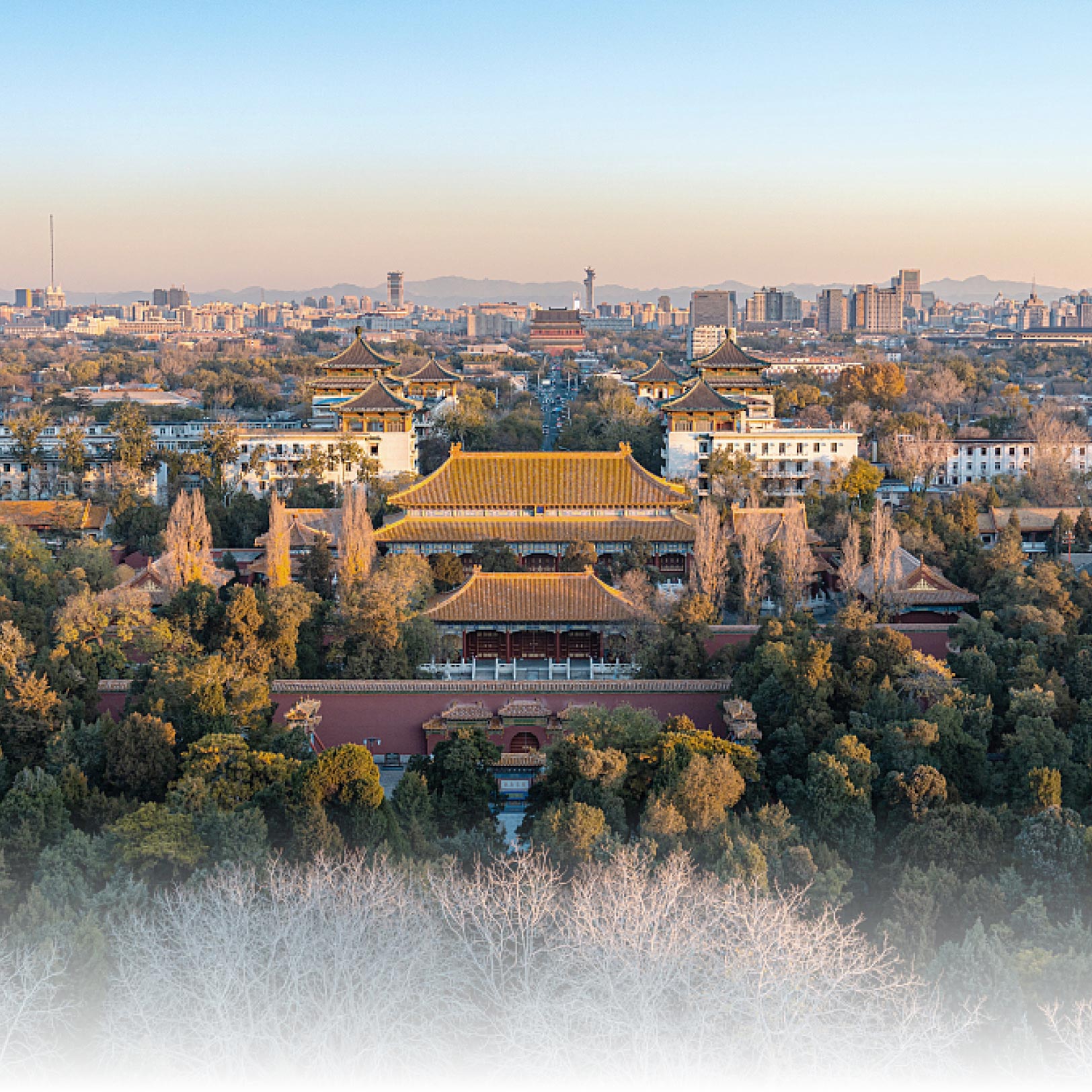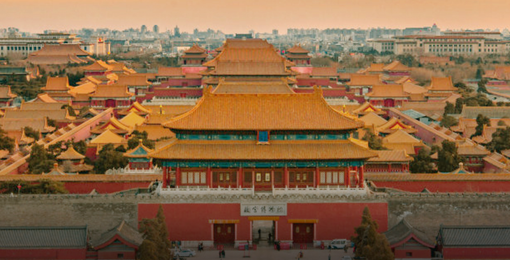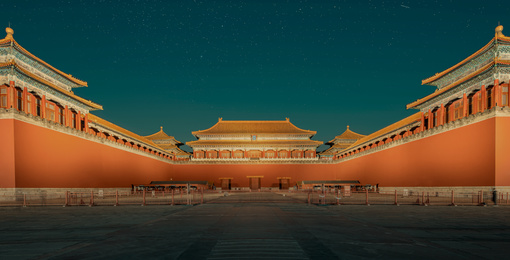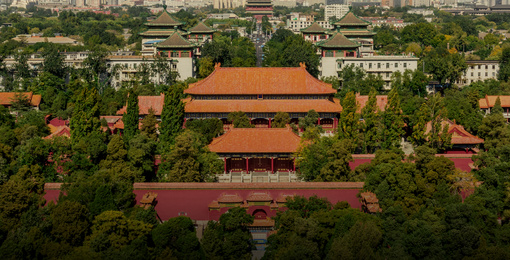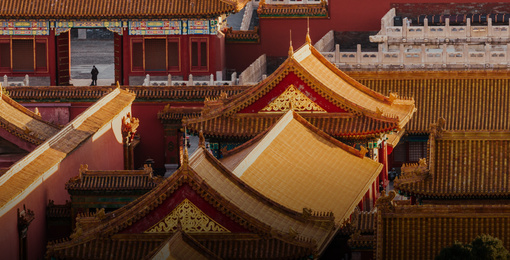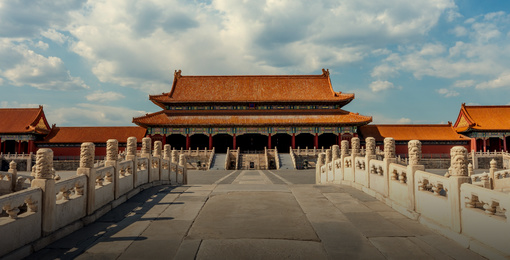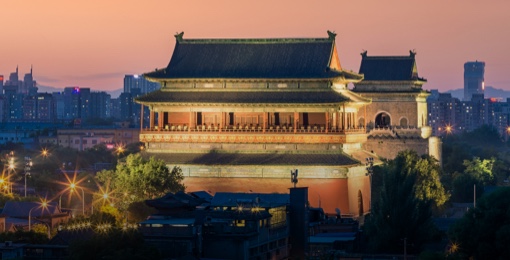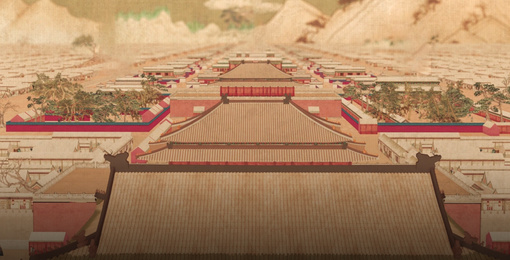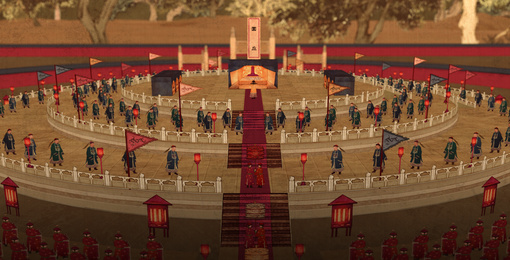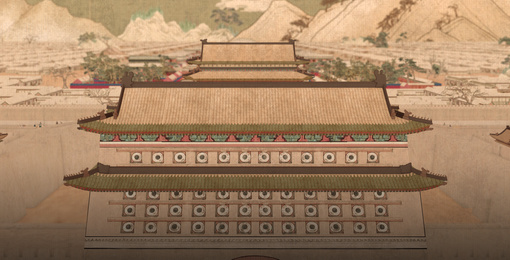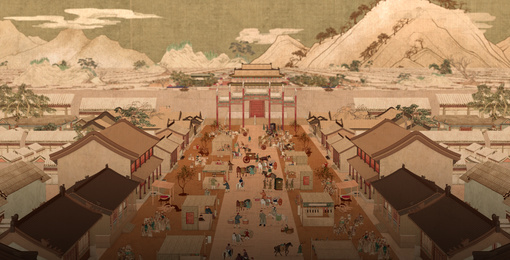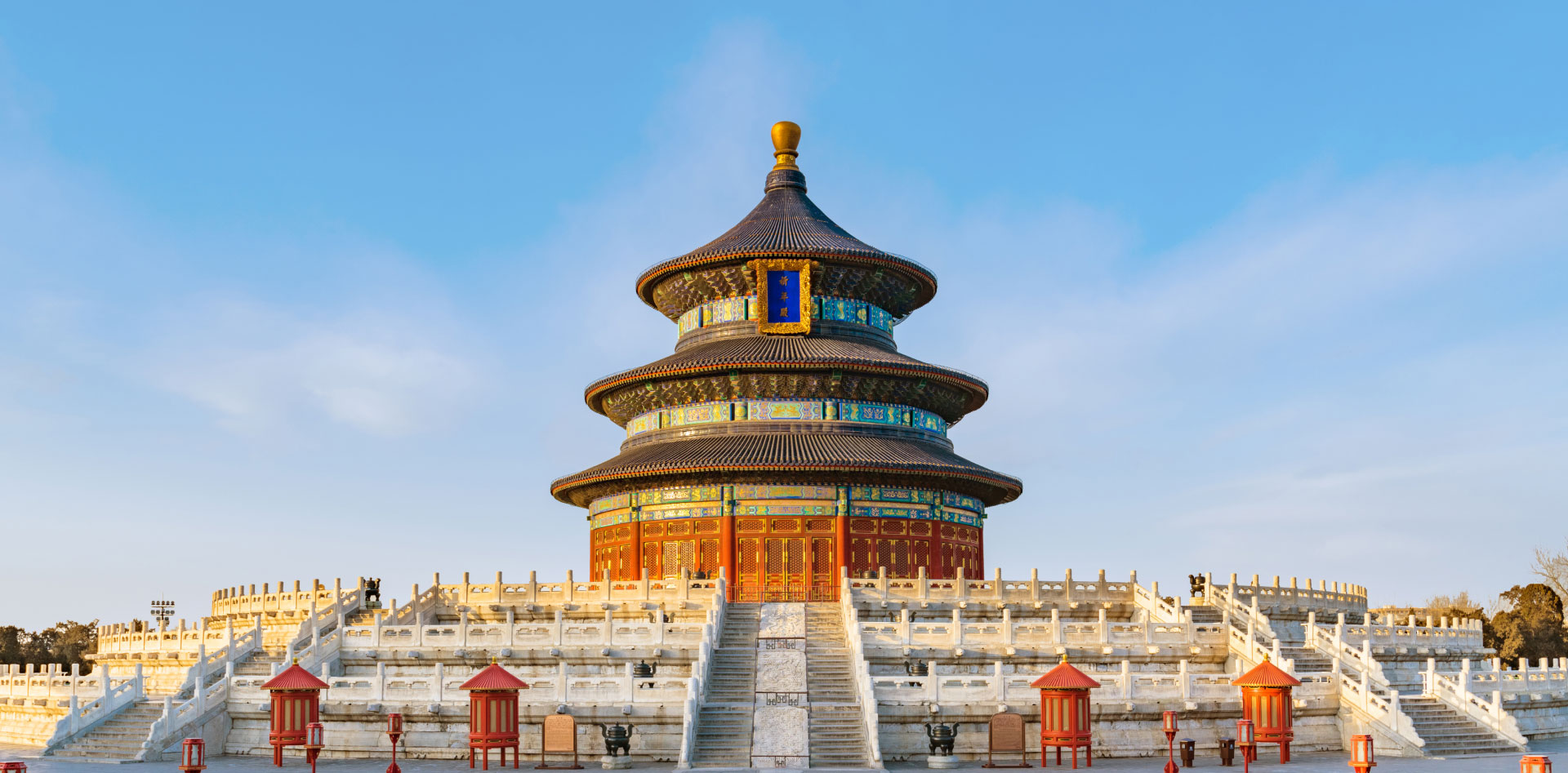The Temple of Heaven sits in the south of the outer city of the old city of Beijing, east of Beijing Central Axis. It symmetrically faces the Altar of the God of Agriculture lying on the west side of the Axis. The Temple of Heaven comprises the inner and outer sections. The inner section is located to the east of the center of the outer section. The inner and outer altar walls are round in the north and square in the south, representing the ancient belief that "heaven is round and earth is square."
The siting of the Temple of Heaven reflects the ancient Chinese cultural tradition of setting "sacrificial facilities in the southern suburb." Its location, planning pattern, and symmetrical east-west layout with the Altar of the God of Agriculture highlight the respect for and emphasis on rituals and order in Chinese capital city planning. They also give prominence to the dominant role of Beijing Central Axis in urban planning. The Temple of Heaven is China's largest and best-preserved Ming and Qing era building complex for heaven-worshiping ceremonies. Its architectural and landscape design exhibits the ancient Chinese worldview, making it a masterpiece of imperial architecture for ceremonial worship in ancient China and a carrier of national heaven-worshiping rituals and cultural traditions of the Ming and Qing dynasties.





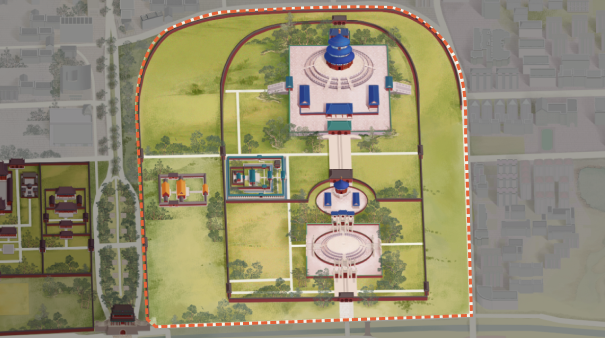
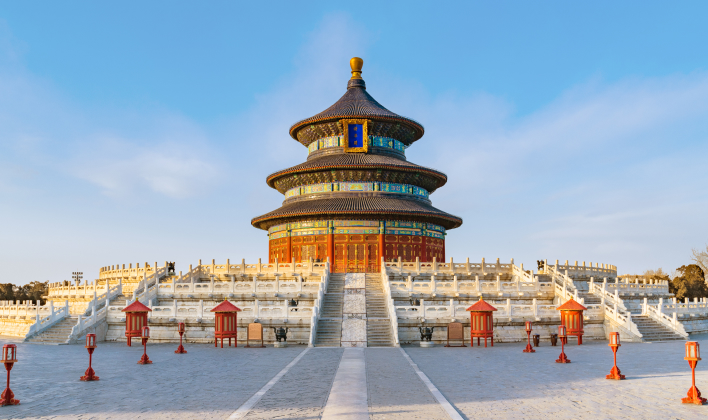
The structures and landscapes of the Temple of Heaven, along with the building forms, materials, and colors, are intended to express the ancient Chinese understanding of heaven. The temple's buildings mostly sit on high pedestals and are covered with roofs of glazed tiles of various shades of blue to symbolize the azure sky. The Red Stairway Bridge, several meters above ground level, links all the main buildings and rises gradually toward the north to create the visual effect of reaching the sky. Old and valuable trees, mostly cypresses, grow in the open ground in the temple's outer section to create a sense of vastness and a solemn atmosphere, characteristic of sacrificial ceremonies carried out in the suburbs.
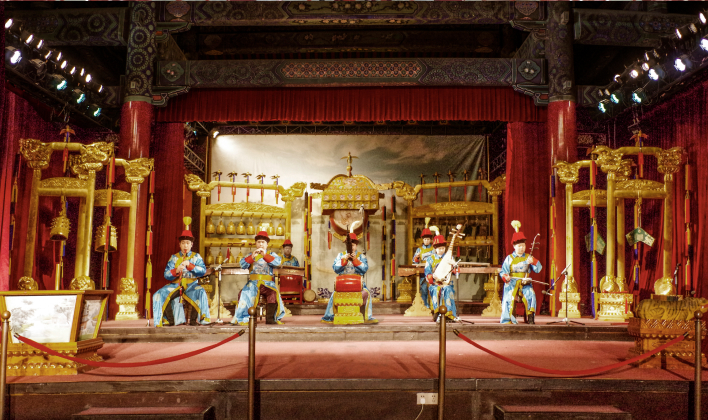
During the Ming and Qing dynasties, the Temple of Heaven was the ceremonial space for the emperor to offer sacrifices to the "God of Heaven." Its layout has been altered several times to adapt to the changes in worshiping ceremonies. The Circular Mound and the Pray for Grain altars were the Temple of Heaven's core sacrificial altars with different purposes during the Ming and Qing dynasties. The Altar of Circular Mound was used for the ceremony of heaven-worshiping after the Jiajing reign (1522-1566) reign during the Ming dynasty. This ceremony was generally held on every winter solstice to express gratitude to heaven for its grace in the past year and pray for its blessings in the coming year. The Hall of Prayer for Grain was used for the ceremony of praying for good harvests. The ceremony was held in the first month of every spring. Today, the Temple of Heaven is open to the public as a park.
The Temple of Heaven was first built in 1420 as the Temple of Heaven and Earth, a venue for worshiping both heaven and earth. The Ming dynasty separated the sacrificial rituals of heaven and earth during 1530 to 1545 and built the Altar of Circular Mound to the south of the Grand Prayer Halll, while expanding the Taishen Hall (today's Hall of Imperial Vault of Heaven) to house the tablets of gods. The Grand Prayer Hall was changed to the Grand Sacrificial Hall, where the "grand worship ceremony" was performed. From 1743 to 1754, the Temple of Heaven underwent some renovations, during which the Altar of Circular Mound in the south of the inner section was expanded. The Grand Sacrificial Hall in the north of the inner section was changed into the Hall of Prayer for Good Harvests. The Temple of Heaven ceased to be an imperial worship building in 1912. In 1918 it was opened as the Temple of Heaven Park to the public, a function it has served to this day.
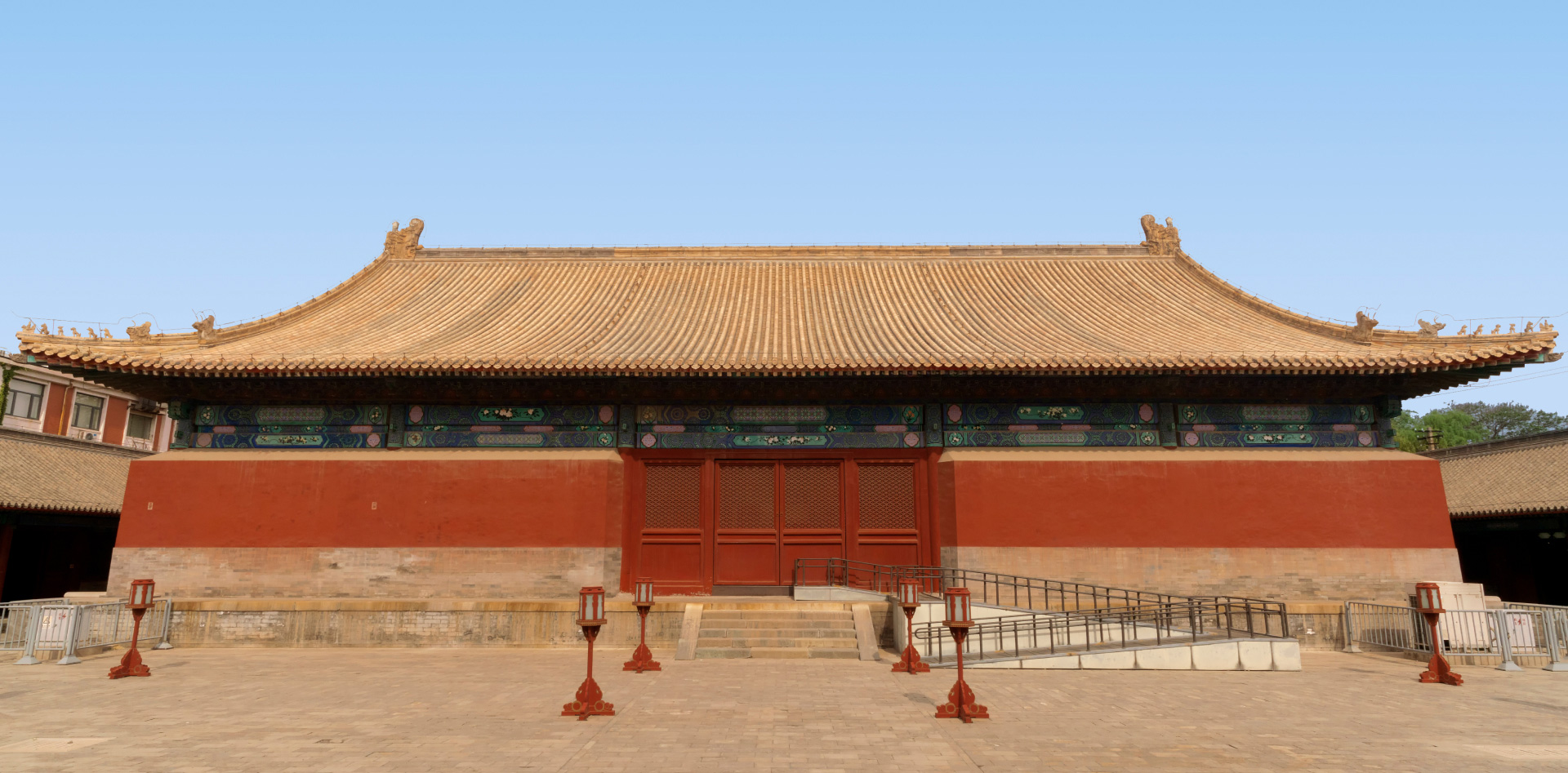
The Divine Music Administration Complex was where performers practiced music and dance and lived during the Ming and Qing dynasties.
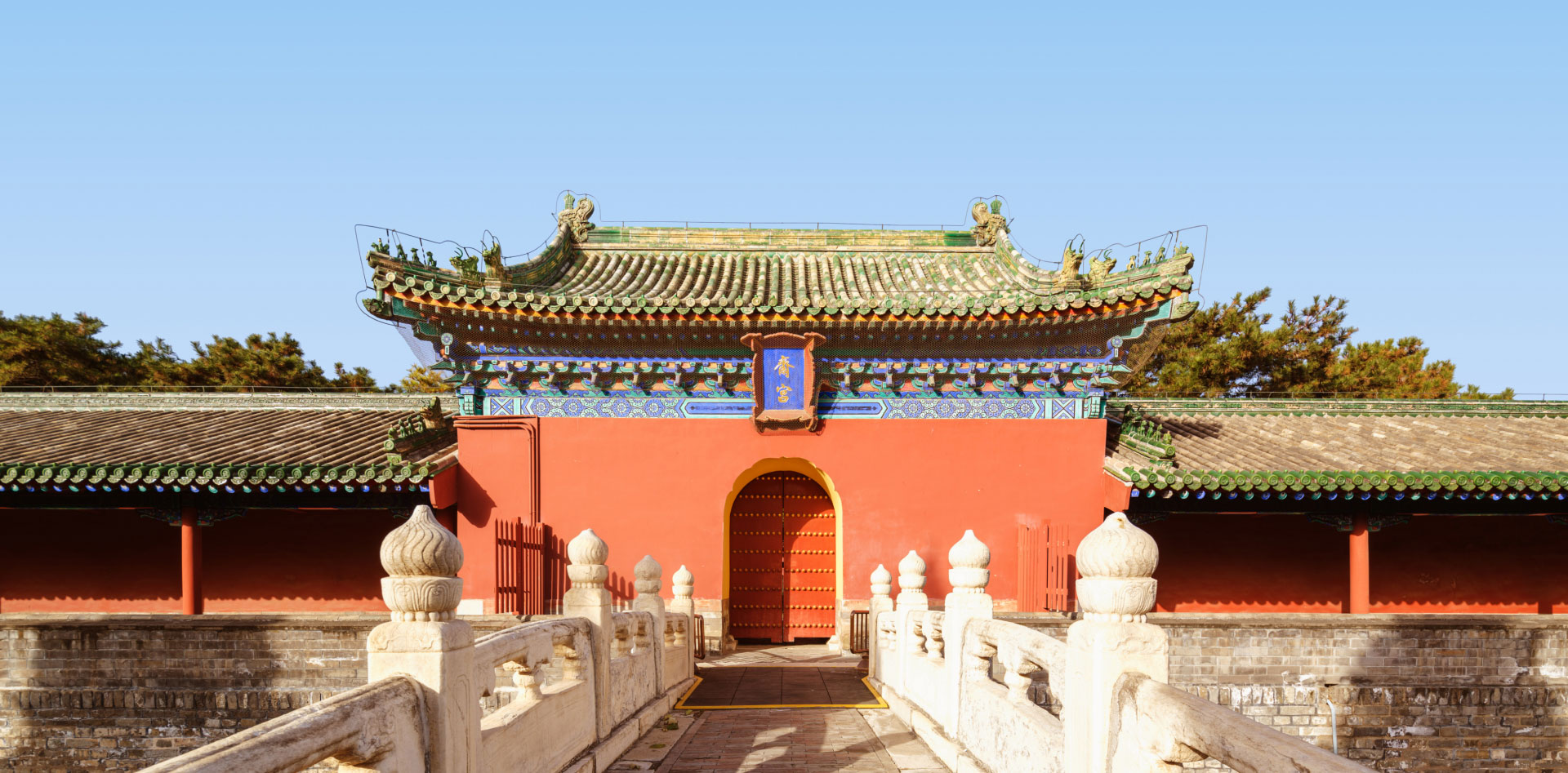
The Palace of Abstinence was the residence of the emperors when they were fasting during the worship period in the Ming and Qing dynasties.

The Hall of Imperial Zenith was the place to enshrine the sacrificial tablets used in worship activities on the Altar of Prayer for Grain in the Ming and Qing dynasties.
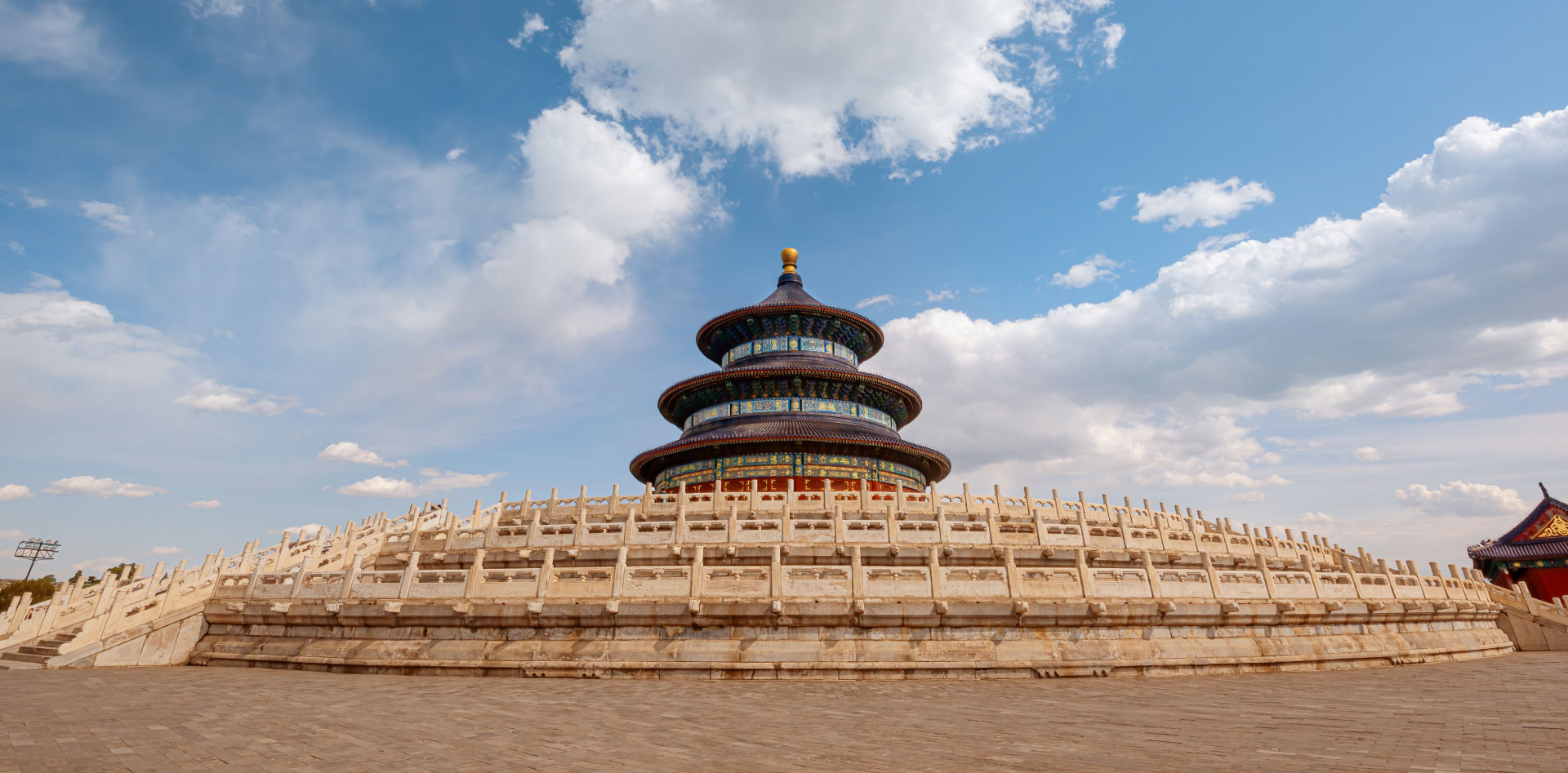
The Altar of Prayer for Grain Complex was the place for Heaven-worshipping in the first lunar month in the Ming and Qing dynasties.
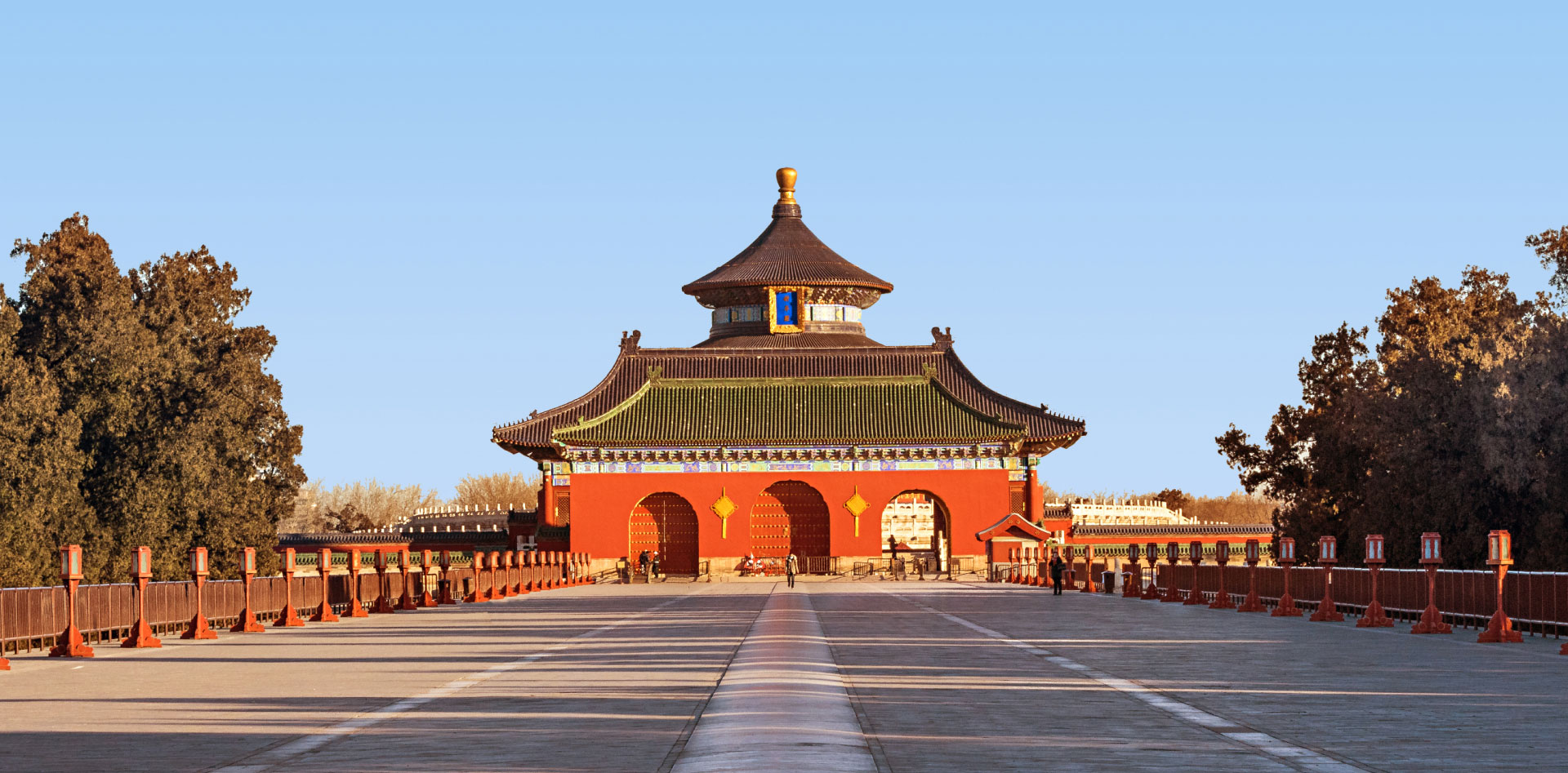
The Red Stairway Bridge was the imperial path to the altar for the emperors of the Ming and Qing dynasties.

The Imperial Vault of Heaven Complex was where the sacrificial tablets used in worship activities were stored during the Ming and Qing dynasties.
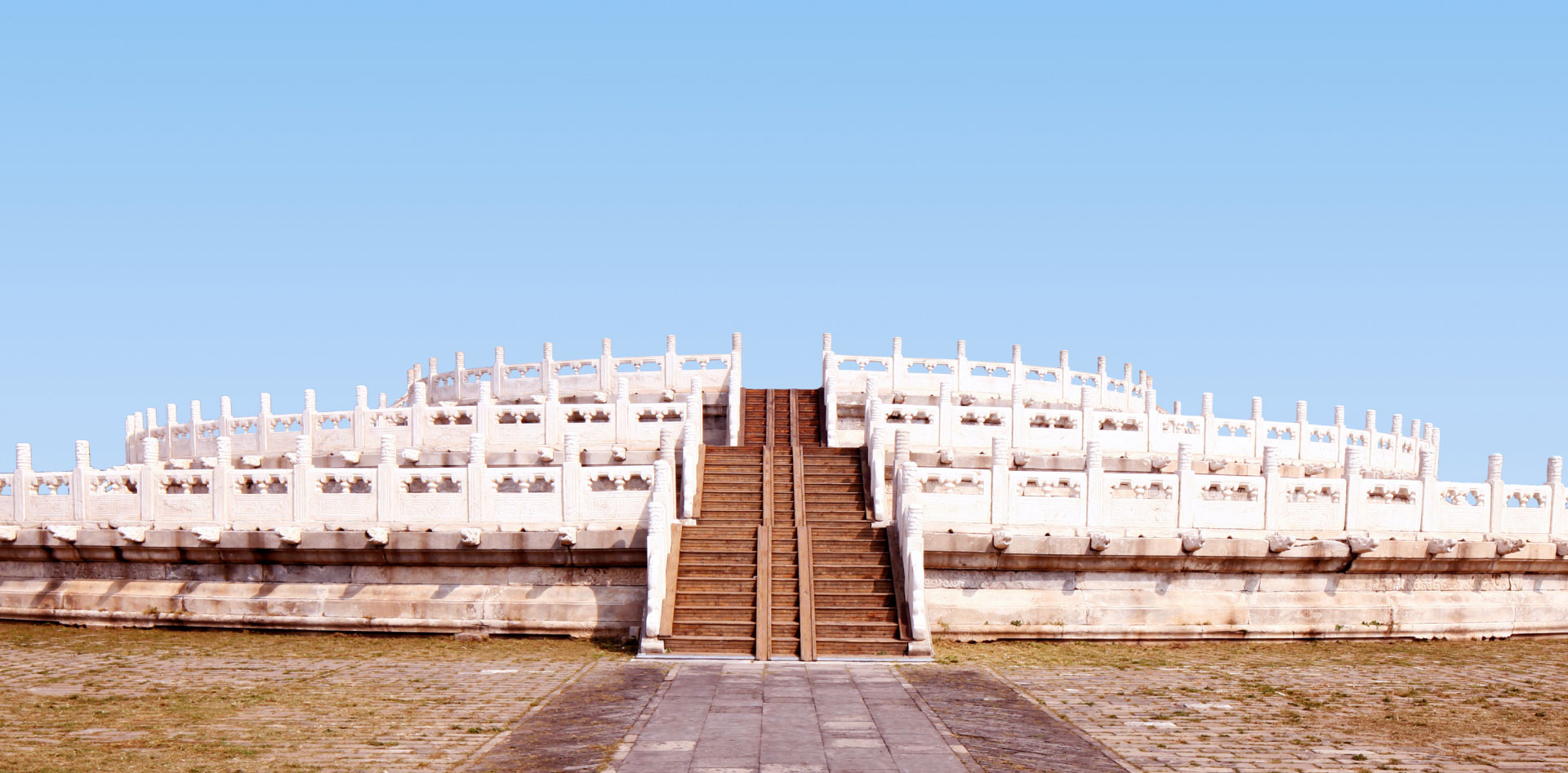
The Altar of Circular Mound Complex was the place for Heaven-worshipping on the Winter Solstice in the Ming and Qing dynasties






